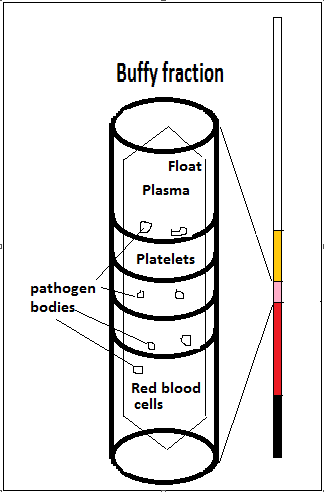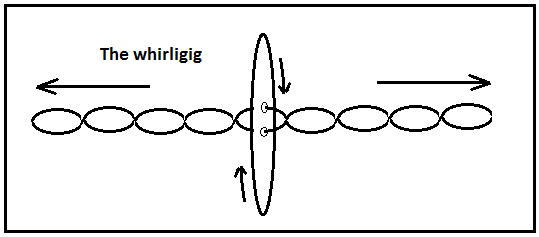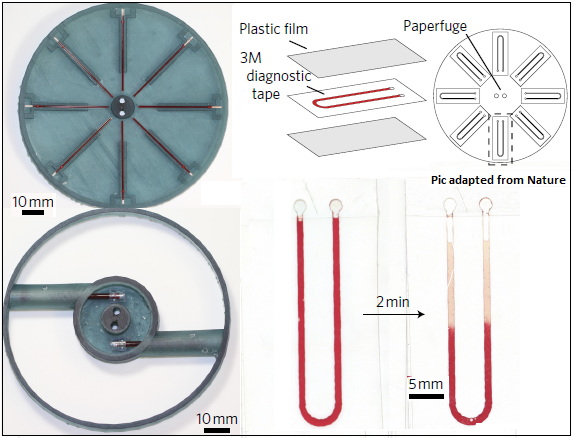A child’s plaything, known since ancient times, may provide a way to quick tests for malaria, HIV and tuberculosis, says S.Ananthanarayanan.
An impediment in the treatment of many diseases is that the resources for detecting and identifying the concerned pathogen are not available. Even when there are microscopes and trained personnel, the equipment for preparing the blood sample is often absent. This is particularly true of the case of malaria, which affects a hundred million persons and claims well over a million lives in a year, mostly in Africa and south east Asia.
It is in this context that M. Saad Bhamla, Brandon Benson, Chew Chai, Georgios Katsikis, Aanchal Johri and Manu Prakash, from Stanford University, report a simple, basic, ‘low tech’ device that serves to concentrate blood samples to required levels in minutes, at trivial cost. Writing in the journal, Nature Biomedical Engineering, the team describes a schoolboy toy that achieves better centrifuging speeds than any human-powered device so far.
The symptoms of early malaria are not at all specific, and this is unfortunate, as correct diagnosis and prompt treatment are important for recovery. Screening of blood samples is hence urgent when there is an outbreak. A common method to identify malaria is to look for the parasite in blood smears through the microscope, with the help of dyes and special light. A skilled technician can then detect parasites when 20-40 parasites are there in every microliter of blood. The method, however is laborious and takes time and it does call for skill and training.
A recent improvement is with the quantitative buffy coat (QBF), which is a component of blood, separated and concentrated by rapid spinning. The centrifugal, or centre fleeing forces that act when a substance is spun, collect the lighter part near the centre of the spin and throw the denser portions to the outer part. When a blood sample is centrifuged, the red blood cells are thrown to the outer part and a clear liquid, the plasma, stays towards the centre. And between the two portions, there is a thin, intermediate layer called the buffy coat, because it is buff in colour. This part contains white blood cells and platelets and can be examined for parasites present in the blood. The thin tube in which the blood sample is centrifuged also has a float that has the density of the buffy part. This settles at the same level, and the buffy coat is squeezed to occupy a greater length, on account of the float.

Microscopic examination of the buffy coat is then more sensitive and parasites can be detected even if there are only one or two in a microliter of the sample. A crucial part of this process, however, is the centrifuge, an equipment for spinning the tube containing the blood sample, some 12,000 times a minute. As the Stanford University papers says, the centrifuge is the “workhorse of any medical diagnostic facility.” The machines, however, are bulky, expensive and they use electricity. They are hence typically not available in field and samples have to be sent for analysis at a base station that may be a day’s journey away. Alternate methods that work without electricity are again bulky and can attain rotations speeds of only 1200 times a minute, which is not good enough or time consuming. Crucial intervention in remote parts of the poorer countries is thus either ignored or gets delayed.
Child's toy
The device developed by the Stanford group is based on the simple, ‘buzzer’ or ‘whirligig’ – a circular disc with a pair of holes in the centre. Two strings pass through the holes and their ends are joined. If the loop is now stretched out and the disc given a few turns, the strings wind into a spiral and grow taut. Now if the strings are pulled apart, they spiral unwinds and sets the discs spinning. The disc keeps spinning beyond the starting point and winds the strings into an opposite spiral. If the strings are pulled apart again, the disc spins back the way it came, but with more energy. In just a few seconds, the disc can be set whirling round at feverish speed, estimated by the Stanford group to go as high as 125,000 turns a minute!

Children use any kind of disc to create this plaything. In India it is common to flatten out the crowned cap of a soft drink bottle. Colourful discs of plastic are sold in toy shops. The Stanford group have devised and engineered a special paper disc, which they call the ‘paperfuge’, with an arrangement to hold a set of radial glass tubes with blood samples. It is remarkably simple, just two paper disc kept together with Velcro strips, with the sample tube held in between. The picture shows sample tubes mounted on kinds of paperfuge and the result of centrifuging for two minutes.

The device has been tested by the group and the paper reports complete separation of RBC and plasma with fifteen minutes of centrifuging. The RBC fraction could be used for testing for anaemia as effectively as with a commercial, electric centrifuge. The plasma fraction was also suitable for other rapid diagnostic tests. And as for the buffy coat, the region expanded by the float was easily used for identification of parasites of malaria and other diseases. “A comparison of individual blood components, including platelets, monocytes and granulocytes, revealed good quantitative agree-ment between the buffy coat obtained with a paperfuge and a commercial electric centrifuge,” the paper says.
------------------------------------------------------------------------------------------